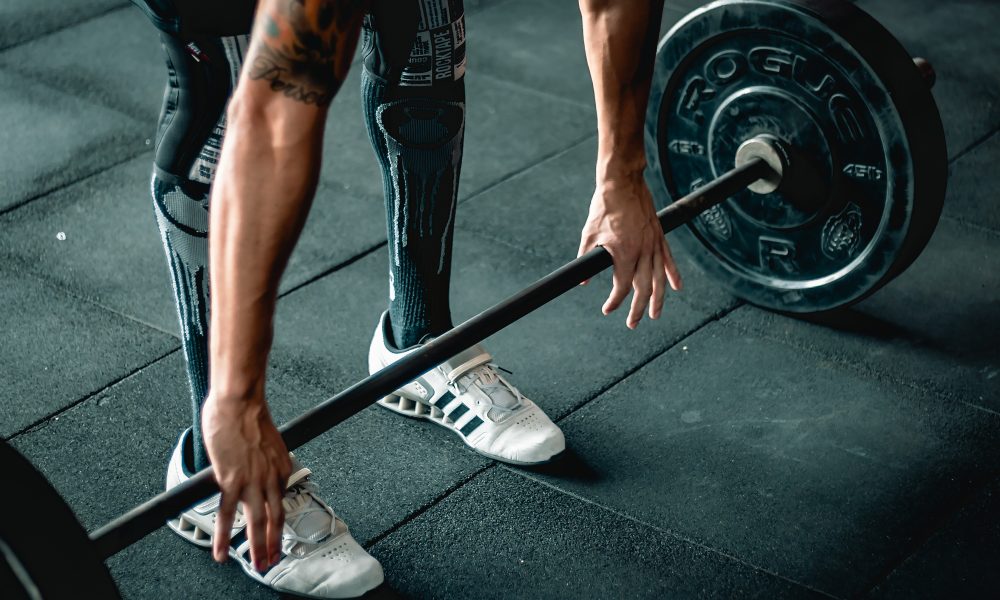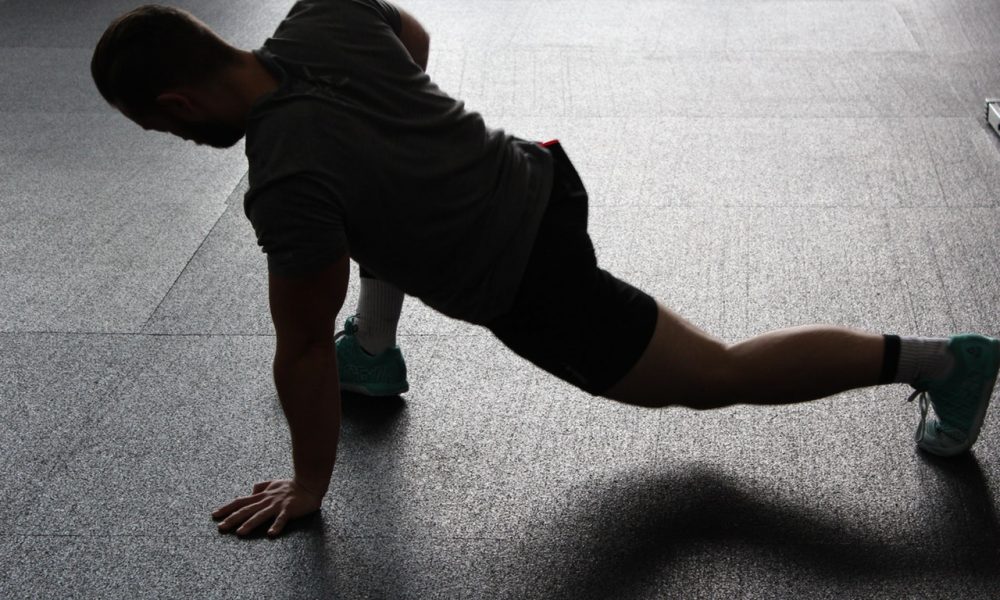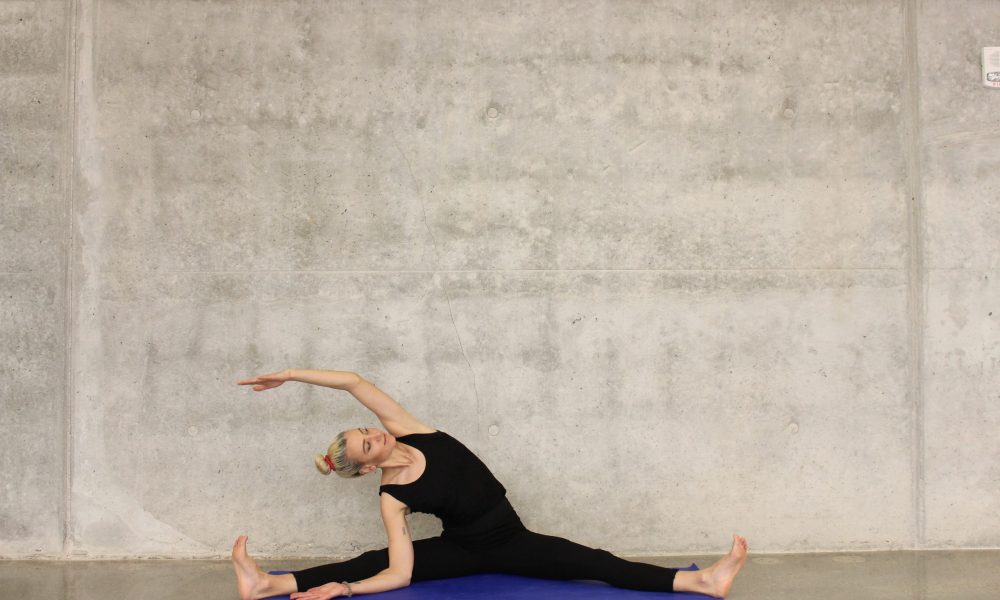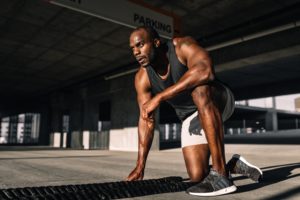
The Truth About Coffee and Caffeine
You probably don’t know the crucial facts about coffee like how it works, what it does, how much to drink, and the myths surrounding it. Allow me to enlighten you my friend.

Stretching is an interesting topic in this ever so controversial world of fitness. On one hand, you have hippie yoga girls who build their entire training programs around stretching. On the other extreme, it’s becoming a trend for fitness professionals and even physios to bash stretching as more overrated than pineapple pizza.
Let’s get a couple of things straightened out right away. First of all, nothing will ever be more overrated than pineapple pizza. Second of all, stretching’s usefulness probably lies somewhere in the middle, between extremes.
Before I dive into the science, you need to understand the 2 main types of stretching.
While they produce many similar effects, they also have distinct differences. In some instances, I’ll be addressing them separately, so keep a watchful eye out for context. Anyways, let’s dive into it.
Many people think stretching works by literally stretching your muscle fibers. While that’s partially true, the main mechanism behind it is not primarily architectural in nature, but neural (10).
In other words, what primarily causes you to reach your toes better is through a neural mechanism called stretch tolerance (11,12,13). This is when your nervous system gets more comfortable with greater ranges of motion and tolerates more flexibility, very similar to foam rolling.
These neural effects occur from your central nervous system which can affect your body systemically.
For example, just like foam rolling, static stretching one body part can improve range of motion in another body part that’s not even close by (14).
So what does stretching even do?
Well for starters, stretching makes you more flexible (1,40). This is as obvious as water making you wet, but what people don’t know is that flexibility isn’t some necessary life requirement that your middle school P.E. teachers made you think.
In reality, no health markers are correlated with flexibility which makes stretching inherently unnecessary (45).
However, if you do want to pursue flexibility like say for a sport or to impress a yoga girl with your splits, stretching can be useful, but isn’t the only way to get flexible.
Strength training can also make you more flexible.
Yes, you read that right. Lifting weights can make you more flexible.
In fact, all studies comparing strength training to stretching shows the flexibility gains are either similar or favors strength training (2,3,4,5,51).
This happens with full range of motion training particularly with emphasized eccentrics. To do this, you need to apply sufficient tension when lowering weights through it’s full contractile range. This can be done simply by lowering slowly, but is best maximized with eccentric specific techniques.
When done correctly, the resistance and force will trigger muscle growth by lengthening your muscle fibers (6). This occurs with static stretching as well, but the effects aren’t as pronounced and only occur with intense stretches (6,7,8).
The flexibility gains from static stretching is also short lived compared to strength training. Strength training in new ranges of motion is better than stretching for locking in flexibility because your fibers actually grow in length (9).

Research shows doing both is probably your best bet to maximize flexibility long term especially considering how convenient stretching is (9). However, sufficient eccentric strength training isn’t always practical.
So while strength training is an underrated flexibility builder, it doesn’t mean you can solely rely on it if your goal is to practically maximize flexibility.
Static stretching as part of your warm up is pretty controversial. There is compelling research to show static stretching can be unwise directly prior to exercise.
Some research shows static stretching pre-workout doesn’t reduce injuries as many people claim (15,16).
Some research shows static stretching pre-workout can even hurt performance. One study revealed static stretching before a 1-mile hill run dropped performance by 8% (17).
Research also shows static stretching pre-workout can hinder strength training performance, lifting volume, and muscle growth (18,42). That’s definitely no bueno, but that shouldn’t be a concern in most practical situations (49). That being said, dynamic stretching is a better choice pre-workout.
At first glance, the studies about static stretching pre-workout seems pretty unfavorable, but I assure you it’s not as bad as it sounds. This is because how subjects are instructed to stretch in studies is deeply different from how people stretch in a typical warm up.
In studies, subjects employ long stretches done immediately prior to strenuous exercise.
I don’t know about you, but most people I know don’t hold a long stretch and then jump right under a heavy barbell to squat. That’s just dumb.
A lot of research shows as long as your pre-workout static stretches are under 60 seconds and not too intense, muscle performance is not compromised (19,41).
But that’s neither here nor there because dynamic stretching solves everything. Dynamic stretching is infinitely better than static stretching for warming up.
Unlike static stretching, dynamic stretching can reduce injury and improve performance while still increasing range of motion (20,21,22,23). This is because dynamic stretching involves movement, so it’s preparing your body to move instead of keeping muscles/joints idle like couch potatoes.

Although you are preparing to move, be sure to keep your dynamic stretches controlled in tempo to truly feel your muscles stretch and activate. Excessively fast dynamic stretching movements have been shown to be less effective than controlled ones (24).
For warming up, dynamic stretching is clearly the superior sibling to static stretching. This doesn’t mean you absolutely can’t do any static stretching in your warm up (49).
In one study, static stretching is better at improving range of motion than dynamic stretching and is not detrimental as long as you follow up with dynamic stretching (25).
So if you want to static stretch during your warm up, follow it up with some dynamic movement (26). Pretty simple thing to keep in mind. For more details on warming up, click here for a full article.
Most kombucha drinking yoga girls won’t shut up about how stretching will help you reduce soreness and improve recovery. However, stretching’s effect on recovery and soreness isn’t super promising.
One study showed light stretching did improve recovery and perceived soreness, but not markers of muscle damage (27).
Another study in youth soccer players showed stretching did not reduce soreness/muscle damage and didn’t improve recovery (28).
A systematic review among other studies looking at stretching’s impact on muscle soreness, found stretching ever so barely improves soreness if any at all (29,43,44).
Another review looking at stretching and recovery found stretching to be overrated for recovery when compared to other methods like a simple active recovery (30). The authors essentially concluded stretching for recovery is not some magical solution that yoga girls claim it to be and a full hour class of stretching is almost always a waste of time.
However, another systematic review found long term stretching can improve muscle performance (31). Half the studies in this review found no effect while the other half found beneficial effects, which is dependent on which performance measure you’re looking at. Chronic stretching seems to benefit jumping and eccentric lifting performance due to decreasing tendon stiffness. Concentric performance was mixed, but slightly favored stretching. Isometric showed no clear benefit from stretching.
Unfortunately, the latest review found stretching did not improve recovery (53).
A newer 6-week study found stretching 3x per week boosted all metrics of performance (52).
So while stretching data on soreness and acute recovery are mixed, it likely has some considerable performance benefits in the long run when done chronically.
Grab my Lifter’s Guide to Managing Stress
Stretching has been shown to decrease blood pressure and improve cardiovascular health, especially done after strength training (32,46,47).
It does this by slowing down blood flow velocity briefly, but further increases it after stretching is complete.
A recent systematic review of 16 studies found stretching reduces artery stiffness and heart rate (50).
Stretching helps you decrease sympathetic activity and increase parasympathetic activity, both in the short and long term (33,34,35).
Your sympathetic nervous system is responsible for fight or flight response. It’s what primes your body for intense situations like an intense workout or being chased down by a man-eating dinosaur.
Your parasympathetic nervous system on the other hand is known as the rest and digest counterpart. It lowers your heart rate and helps you relax.
Stretching is deeply good at helping you relax and unwind from intense training. This is useful for those with anxiety, people who workout close to bedtime, or individuals who struggle to fall asleep.
In fact, one study found 2-2.5 hours of stretching each week improved all markers of chronic insomnia (48).

Many people experience lots of everyday pain points. Although stretching should be used more strategically in a serious rehab setting, for everyday general pain it can have some beneficial effects (36).
One study showed stretching can relieve neck pain (37).
Another study showed stretching relieved low back pain just as good as formal yoga classes with the effects lasting pretty long term (38).
It’s also important to note, if you’re hypermobile (lots of mobility/flexibility) and have pain, stretching can make your pain worse (39). Hypermobile people don’t need much stretching if any at all. They should focus more on strength training to build stability instead.
Alright, so as you can see, stretching is extremely nuanced. It’s not some magical solution to everything, but it does have it’s benefits. Here’s an overview of everything discussed.
Stretching isn’t for everybody and becomes more or less important depending on individual goals and differences. So no, it’s not absolutely needed to get jacked and hit deadlift records, but c’mon, doing the splits is still pretty cool too right?
Marchetti PH;Miyatake MMS;Magalhaes RA;Gomes WA;Da Silva JJ;Brigatto FA;Zanini TCC;Behm DG; “Different Volumes and Intensities of Static Stretching Affect the Range of Motion and Muscle Force Output in Well-Trained Subjects.” Sports Biomechanics, U.S. National Library of Medicine, pubmed.ncbi.nlm.nih.gov/31464179/.
Borges Bastos CL;Miranda H;Vale RG;Portal Mde N;Gomes MT;Novaes Jda S;Winchester JB; “Chronic Effect of Static Stretching on Strength Performance and Basal Serum IGF-1 Levels.” Journal of Strength and Conditioning Research, U.S. National Library of Medicine, pubmed.ncbi.nlm.nih.gov/23254543/.
DJ;, McGRATH RP;Whitehead JR;Caine. “The Effects of Proprioceptive Neuromuscular Facilitation Stretching on Post-Exercise Delayed Onset Muscle Soreness in Young Adults.” International Journal of Exercise Science, U.S. National Library of Medicine, pubmed.ncbi.nlm.nih.gov/27182398/.
Xie Y;Feng B;Chen K;Andersen LL;Page P;Wang Y; “The Efficacy of Dynamic Contract-Relax Stretching on Delayed-Onset Muscle Soreness Among Healthy Individuals: A Randomized Clinical Trial.” Clinical Journal of Sport Medicine : Official Journal of the Canadian Academy of Sport Medicine, U.S. National Library of Medicine, pubmed.ncbi.nlm.nih.gov/28742609/.
JL;, Nuzzo. “The Case for Retiring Flexibility as a Major Component of Physical Fitness.” Sports Medicine (Auckland, N.Z.), U.S. National Library of Medicine, pubmed.ncbi.nlm.nih.gov/31845202/.
BW;, Kruse NT;Scheuermann. “Cardiovascular Responses to Skeletal Muscle Stretching: ‘Stretching’ the Truth or a New Exercise Paradigm for Cardiovascular Medicine?” Sports Medicine (Auckland, N.Z.), U.S. National Library of Medicine, pubmed.ncbi.nlm.nih.gov/28780647/.
Sousa AC;Gomes TM;Sousa MS;Saraiva AR;Araujo GS;Figueiredo T;Novaes JS; “Static Stretch Performed After Strength Training Session Induces Hypotensive Response in Trained Men.” Journal of Strength and Conditioning Research, U.S. National Library of Medicine, pubmed.ncbi.nlm.nih.gov/31453944/.
D’Aurea, Carolina V R, et al. “Effects of Resistance Exercise Training and Stretching on Chronic Insomnia.” Revista Brasileira De Psiquiatria (Sao Paulo, Brazil : 1999), Associação Brasileira De Psiquiatria, 2019, www.ncbi.nlm.nih.gov/pmc/articles/PMC6781703/.
E;Bellafiore M;Gentile A;Paoli A;Palma A;Bianco A;, Thomas. “Cardiovascular Responses to Muscle Stretching: A Systematic Review and Meta-Analysis.” International Journal of Sports Medicine, U.S. National Library of Medicine, pubmed.ncbi.nlm.nih.gov/33440445/.
Afonso, Jose. “Strength Training Is as Effective as Stretching for Improving Range of Motion: A Systematic Review and Meta-Analysis.: Request PDF.” ResearchGate,
T;, Ikeda N;Ryushi. “Effects of 6-Week Static Stretching of Knee Extensors on Flexibility, Muscle Strength, Jump Performance, and Muscle Endurance.” Journal of Strength and Conditioning Research, U.S. National Library of Medicine, pubmed.ncbi.nlm.nih.gov/30161088/.
Sign up for AwesomeFitnessScience Weekly. You’ll get juicy insider secrets, updates, and stories.

You probably don’t know the crucial facts about coffee like how it works, what it does, how much to drink, and the myths surrounding it. Allow me to enlighten you my friend.

Amino acid supplements have overwhelming evidence against their use. I dream of the day dorks across this world would stop purchasing worthless powders like BCAAs.

We all want to burn a ton of calories cause the more we burn, the more we can eat at a given energy balance. For example, it’s far better to diet on 1800 calories instead of 1200 calories.